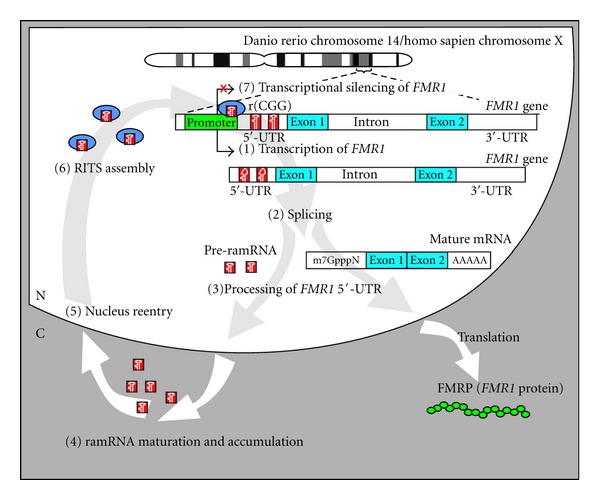Figure 3.

Proposed mechanism of ramRNA-mediated FMR1 inactivation in FXS. Fragile X mental retardation 1 (FMR1) contains a trinucleotide CGG repeat region (r(CGG)) located in the 5′-UTR of the gene. Expansion of this repeat region of FMR1 to over 200 copies results in loss of FMRP expression. Based on current data, pathological silencing of FMRP occurs in seven steps. (1) FMR1, including the r(CGG) region, is transcribed at an early embryonic stage (day 10 in humans and 12 hours postfertilization in zebrafish). (2) Splicing of the gene transcript to form mature mRNA. During this process r(CGG) molecules are released. (3) The r(CGG) molecules are further processed into repeat-associated miRNA precursors (pre-ramRNA) and exported out of the nucleus. (4) Pre-ramRNA is further processed by the enzyme Dicer or a Dicer-like endoribonuclease. Mature miR-FMR1s accumulate in the cytoplasm near the nucleus. (5) Some miR-FMR1s containing a nuclear import signal (NIS) reenter the nucleus by an unknown mechanism. (6) As nuclear miR-FMR1s concentrations rise within the nucleus, they may begin to form complexes for RNA-induced transcriptional silencing (RITS). (7) RITS complexes accumulate near FMR1 promoter and interact with Rad541 and MeCP2, leading to transcriptional silencing of FMR1 through a CpG methylation mechanism. Consequently, ramRNA-mediated transcriptional silencing of FMR1 results in loss of FMRP expression, which is observed in ~99% of patients with FXS.
